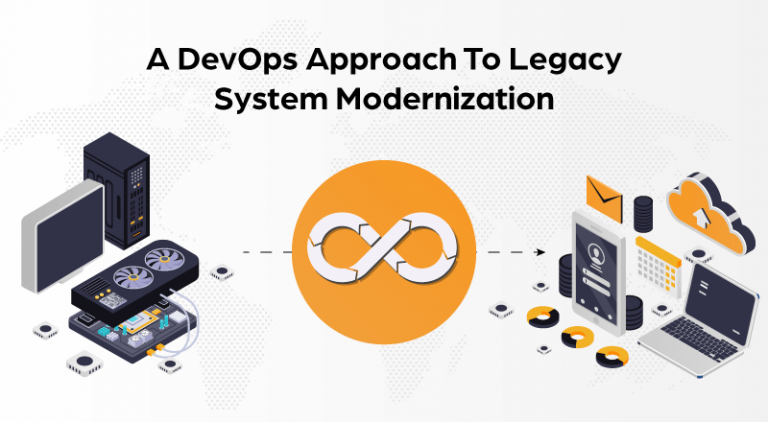Eric Minick, Program Director, IBM Hybrid Cloud DevOps, talked about app modernization in one of IBM Cloud’s video.
Have a look:
In this video, he talked about three transformations that are happening along the way in Infrastructure, Architecture, and Delivery.
Let’s fast forward to today.
- According to APPDYNAMICS, a part of Cisco, 81% technologists said in a report that COVID-19 has created the biggest technology pressure for their organizations.
- Digital customer experience is now the priority, 88% of technologists reported in a survey by AppDynamics.
Many organizations experienced the urgency to move online or to modernize systems to offer the best experience. Amid great pressure on IT systems and organizations, modernizing is essential to ensure continuity and stability.
In this article, we will be talking about Legacy Application Modernization and how DevOps helps companies implement and initialize modernization processes.

What Is Legacy Modernization?
It represents a journey and transformative changes in IT architecture, applications, services, and delivery. Put it simply, it is all about re-engineering, rebuilding, and enabling businesses to operate in new ways with data-driven, automated, and intelligent processes.
Why Modernize?
The reasons are quite obvious as it improves the organization’s ability to deliver sustainable performance.
Modernization helps:
- Reducing cost and time
- Improving customer experiences
- Increase the time-to-market of an application
- Gain a competitive edge with innovative, agile, and responsive solutions
- Achieve business goals with agility
- Drive actionable insights by incorporating data-driven flow across the organization
- Build productive teams that share a common goal and encourage collaboration
- Gain benefits of scalability and flexibility to respond faster to the needs and achieve efficiency
In this digital era, legacy apps must evolve quickly to look for better results and opportunities with fewer overheads and obstacles. Companies need an end-to-end approach for managing and upgrading business technologies to achieve successful IT modernization.
Challenges In Legacy Applications: What Are The Roadblocks?
The majority of the legacy application architecture was monolithic. Due to a single code base and single-tiered applications, they were more prone to various risks.
- Security:
Old systems lack security controls due to unsupported versions, old tools, traditional architecture, and obsolete methods. This results in increased security risks and vulnerabilities.
- Higher Dependency:
In legacy apps, dependency across the teams is higher as teams work in traditional silos to develop and deploy applications. Lack of collaboration and high cohesiveness increases the time-to-market of application and cost.
- Single Point of Failure:
If any module, function, or functionality fails, the entire system fails. This is one of the biggest issues with legacy software.
- Lack Of flexibility:
Changing or updating even smaller modules can cause a whole system down. It required hours, days, and even months to reflect smaller or bigger changes. These systems are difficult to scale up due to large codebase and performance problems.
#devops #devops adoption #devops 2020
